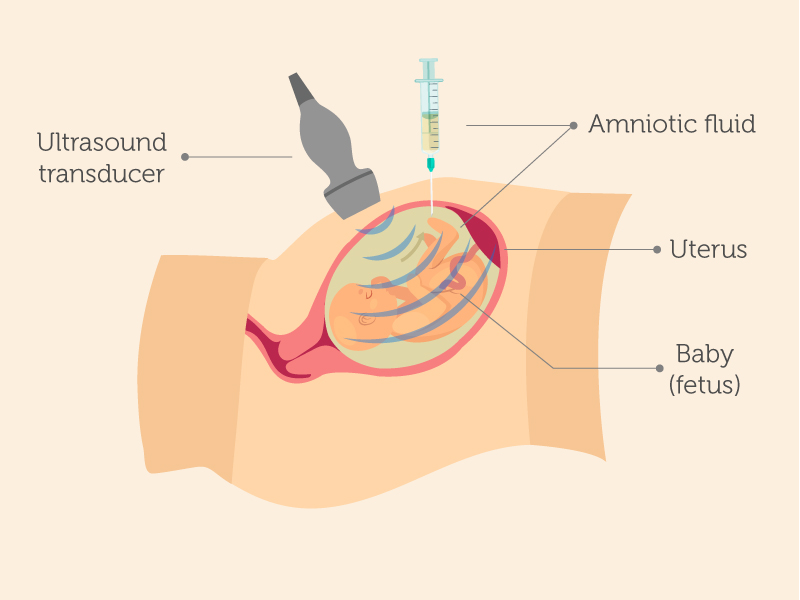An amniocentesis can be performed from 15 weeks’ of pregnancy.
You are first scanned to check the baby, the amount of amniotic fluid around the baby and the location of your
An organ that develops on the wall of your womb in pregnancy. It provides oxygen and nutrients to the growing baby and removes waste products from the baby's blood via the umbilical cord. The placenta carries out functions that the unborn baby cannot do for itself.
placenta
. The doctor performing the test will identify a ‘pocket’ of amniotic fluid that is away from the baby and placenta.
Following the scan, your abdomen is cleaned with antiseptic. The doctor will insert the needle through your abdomen and womb, using ultrasound to guide the direction of the needle. A small amount of fluid is withdrawn via a syringe (approximately 15-20mls of fluid).
After taking the needle out, the doctor can show you the baby’s heart beat.
The test normally takes around 5-10 minutes to perform and once done you will be taken to a quiet area to relax until you feel able to go home, usually about 30 minutes later.
Occasionally, for fewer than 7 in every 100 women, we cannot take enough fluid at the first attempt and have to re-insert the needle. This is usually due to the position of your baby.
If a second attempt fails, we will offer an appointment to have the amniocentesis again on another day.
Initial amniocentesis results are usually available in around 3-5 days. This result (the ‘PCR’ rapid test) will just identify abnormalities of chromosomes 21 (Down’s Syndrome), 18 (Edward’s Syndrome) and 13 (Patau’s Syndrome), which are the commonest chromosomal problems. Testing for other genetic conditions may take up to 2 weeks.

